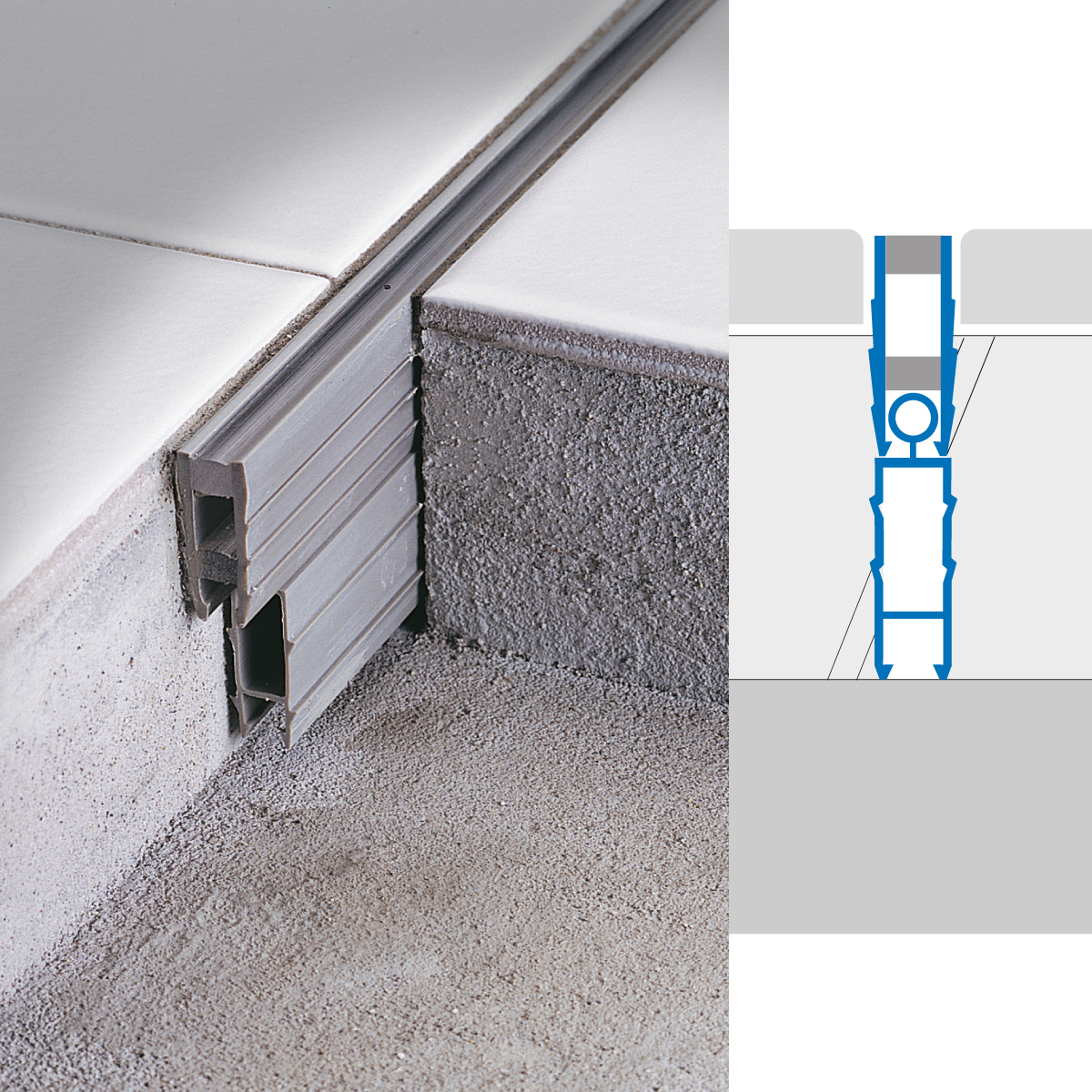Security
-
The installation of stainless steel Stairtec SWP and SWR buttons may take place either off-site or on-site by simply pre-drilling holes at 70 mm on center. In detail: When installed on wood, simply drill a 6.5mm hole and insert the button, pushing it into place. When installing it on marble, stone or ceramic, drill a 7mm hole and fasten the button with an adhesive suitable for the surface. This product is designed for stairways, as decoration or as an anti-slip device (the button has a knurled surface). Alternatively, it can be used as a tactile button on flooring, to indicate areas or pathways.

Was this helpful you for solve?
-
Was this helpful you for solve?
-
The main function of the Floortec uncoupling membrane is to compensate tension from the substrate without transferring the tension to the ceramic flooring above, preventing cracks in the tile. We especially recommend using this membrane in the following cases: floor slabs subject to stress; when you don’t want to place a movement joint on the floor in correspondence with a movement joint in the substrate (simply for aesthetic reasons or because it is located in an inconvenient location in a tile installation); a need to speed up the construction process, given that the membrane allows tile to be installed even when the substrate is not completely cured.

Was this helpful you for solve?
-
No, metals are not flammable and have a very high melting point.

Was this helpful you for solve?
-
The maximum distance between Uptec pedestals is 60cm. Therefore, when using tile lager than 60 x 60cm, we recommend placing a central pedestal in addition to the pedestals placed on the four corner of the tile.

Was this helpful you for solve?
-
The maximum certified load capacity for Uptec pedestals is 1,400 kg.

Was this helpful you for solve?
-
One of the characteristics of the pedestals, in addition to the possibility of inspecting the substrate at any time, is the fact they are recyclable. Therefore, the pedestals do not need to be mechanically connected to the substrate; the weight of the tiles is enough to give the installation the necessary stability.

Was this helpful you for solve?
-
The resistance of PVC ranges from -4 ° (39° F) to + 50 ° (122°F); It is not recommended to use it at a temperature below -4 ° (39°F). In situations at risk or not definable, we recommend the use of stainless steel.
Was this helpful you for solve?
-
Yes, we have floor profiles suitable for settings with high passage or traffic. The materials recommended with the highest resistance to mechanical stress are brass, stainless steel and natural aluminum. For aluminum profiles, only the natural finish is suitable; other finishes may get damaged.

Was this helpful you for solve?
-
Raised floors cannot withstand car passage. One of the advantages of this system is, in fact, the possibility of carrying out a dry tile installation without the use of adhesive and allowing for the future removal of the structure. This type of installation has optimal resistance to static loads (Uptec resistance to point loads = 14kN), but the components are not connected to each other, so the wheels of a vehicle which cause friction across the tile surface could collapse the structure.

Was this helpful you for solve?
-
Before installing the flooring it’s important to turn on the heat progressively from 10º to the maximum temperature for a couple of weeks, in order to dry the substrate completely before installing the flooring. Then place a perimeter joint, a joint on the threshold, and joints in areas where the passage of hot water and cold water intersect because the flooring is most subject to compression and contraction.
Was this helpful you for solve?
-
Movement joints are superficial joints (at the floor level), placed in correspondence with the underlying substrate. The superficial joint must be realized in exact correspondence with the joint of the substrate, even just a 5cm difference between the 2 joints can cause tile breakage or tenting (you may hear a “popping” sound). We recommend placing movement joints around areas with a maximum side length of 4 meters (16m2).

Was this helpful you for solve?